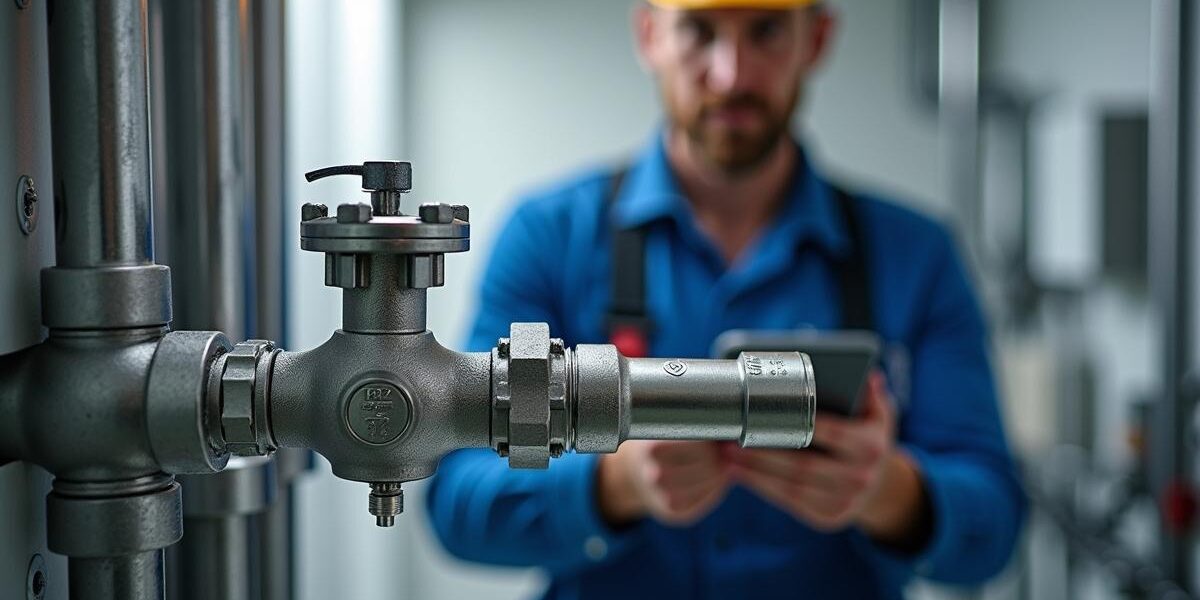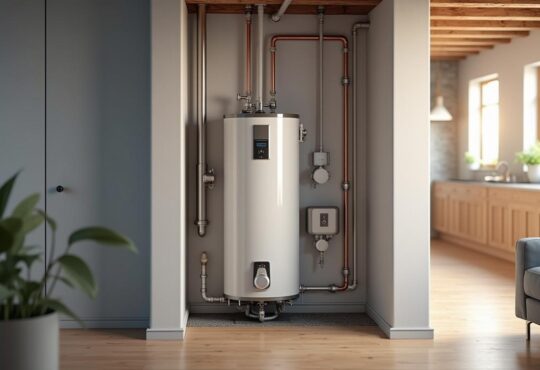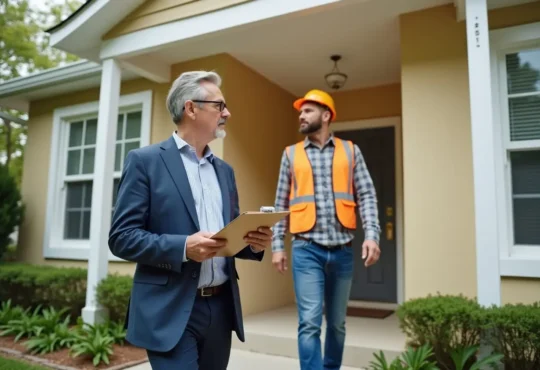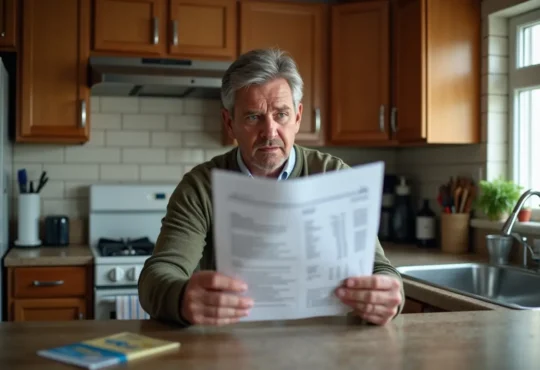
What Does RPZ Mean in Plumbing?
Wondering what does RPZ mean in plumbing? The term is unfamiliar to most people at first. The truth is that this essential device helps protect your drinking water and prevents harmful contaminants from sneaking into your tap. Whether you’re a homeowner or a professional plumber, knowing how an RPZ assembly fits into a plumbing system boosts both safety and peace of mind.
Contents
- 1 The Role of Backflow Prevention
- 2 Plumbing Safety and Water Supply Protection
- 3 Why an RPZ Valve Installation Matters
- 4 The Risks of Backflow and Non-Potable Water Systems
- 5 Maintaining Your RPZ and Plumbing Codes Compliance
- 6 The Bigger Picture: Residential and Commercial Installations
- 7 Working with Plumbing Service Providers
- 8 Final Thoughts
The Role of Backflow Prevention
Backflow prevention keeps unwanted water or chemicals from moving in the opposite direction through your pipes. If something causes a sudden change in pressure, non-potable water could flow back and mingle with your clean supply, creating serious health risks. This is where an RPZ assembly comes in as a safety device, minimizing the risks of backflow and offering water distribution security for both residential plumbing systems and commercial plumbing solutions.
Backflow events can occur due to issues in the local municipal supply, sudden shifts in water pressure, or even problems in your own plumbing fixture. By relying on a valve assembly like an RPZ, you add an extra layer of protection to prevent contamination. Numerous plumbing regulations underscore the importance of installing these devices in settings where you want to safeguard drinking water safety and meet plumbing codes compliance.
Plumbing Safety and Water Supply Protection
Plumbing safety isn’t just about avoiding leaks or clogs it’s about ensuring health standards are met and water safety is never compromised. An RPZ valve installation reduces the danger of cross-connections, where non-potable water might otherwise end up mixing with the water you use for drinking or cleaning. Cross-connection control becomes crucial in large buildings, irrigation system protection setups, and other situations that present a higher chance of cross-contamination.
Since backflow prevention policies are part of plumbing codes compliance in most regions, it’s vital to have a plan for regular backflow testing. Cities often require annual tests to verify that the device still operates correctly. Skipping those tests or delaying necessary valve inspection can cause unwanted violations and, more importantly, leave your home’s or business’s water at risk.
Why an RPZ Valve Installation Matters
Many people ask why an RPZ valve installation has become standard in newer plumbing projects. Unlike a simple check valve or dual check setup, a Reduced Pressure Zone backflow device has an internal pressure relief mechanism. This pressure differential feature helps discharge water if any malfunction is detected, preventing a potential buildup of pollutants.
RPZs excel at defending against severe backflow scenarios because they immediately identify a shift in water flow or pressure then safely reroute water without tainting the rest of the plumbing system. If you’re keen on water quality assurance and plan to protect your premises, an RPZ might be exactly what you need. Plumbing service providers often suggest these installations in contexts ranging from restaurant kitchens to private residences with extensive irrigation systems.
Pressure Relief and Flow Control
One of the core strengths of an RPZ assembly is its capacity for efficient flow control. It features two check valves and a relief valve nestled between them, safeguarding water supply protection. When water pressure drops unexpectedly, the relief valve opens, helping you avoid dangerous build-ups and possible leaks. Then, once the system normalizes, the device seals back up, ensuring continued pressure relief without compromising purity.
This design differs from simpler valves because it offers a more nuanced approach to backflow prevention. A dual check valve might suffice for smaller, low-risk connections, but an RPZ often becomes mandatory when you’re guarding critical lines like chemical dispensers, medical facilities, or irrigation system protection for large properties.
The Risks of Backflow and Non-Potable Water Systems
Even small contaminants can pose a threat if non-potable water systems find a pathway into your drinking lines. Sometimes a faulty plumbing fixture like a garden hose inlet positioned in a neglected pond can create a backflow hazard. In other cases, industrial fluids in commercial plumbing solutions might catapult pollutants into your water distribution lines.
Drinking water safety stands at the top of most people’s priority list, so establishing a robust cross connection control plan is critical. If backflow occurs, contaminants might include fertilizer run-off, soap residues, or chemicals from cooling towers. By installing and maintaining an RPZ, you reduce that chance dramatically.
Maintaining Your RPZ and Plumbing Codes Compliance
Regular RPZ maintenance is necessary for preventing failures or blockages in the valve assembly. Backflow testing performed by licensed plumbing service providers ensures the device’s internal mechanisms still function correctly. You’ll also want to ensure a professional does a thorough valve inspection yearly or as required by local plumbing codes.
Preventative plumbing measures often include cleaning or replacing worn parts to guarantee that every component remains in top shape. Once you handle these steps, you’re typically in line with local plumbing regulations. Keeping up with scheduled checks and documentation satisfies many regulatory requirements and, more importantly, secures your drinking water’s integrity.
RPZ Maintenance Tips
Keeping an eye out for leaks or unusual behavior in your RPZ assembly can save you from big repairs down the road. If you detect constant dripping from the relief valve, it might indicate debris in the check valve. Immediate pipe installation fixes or part replacements can stop a small issue from developing into a full-scale water safety emergency. Regular inspections also let you confirm that the pressure differential is functioning efficiently, ensuring consistent performance year-round.
The Bigger Picture: Residential and Commercial Installations
Both residential plumbing systems and dedicated commercial plumbing solutions can benefit from an RPZ’s protective measures. A home with an advanced sprinkler layout might have cross-connections that bring lawn chemicals in contact with potable lines. Likewise, a commercial establishment with mechanical equipment may rely on an RPZ to handle high-pressure situations, especially where flow control is vital.
Plumbing service providers routinely offer guidance to property owners who want to safeguard their water. Beyond installing an RPZ, they might also assess your plumbing system for hidden faults, suggesting additional preventative plumbing measures. By addressing potential vulnerabilities, you ensure plumbing safety at every turn.
Valve Inspection and Long-Term Reliability
Most RPZs are built to handle substantial water flow, and they’re engineered for durability. However, ongoing checks remain a best practice because an unnoticed clog or a worn valve can erode performance over time. Whether you’re concerned about commercial standards or simply want the best for your home, scheduling timely inspections fosters water quality assurance.
Valves often see heavy use. Just like you’d service a car engine, your plumbing system benefits from occasional tuning. Small repairs now can save hefty costs later and discourage future risk from cross-connections or backflow.
Working with Plumbing Service Providers
Professional plumbers are well-versed in everything from basic pipe installation to specialized RPZ valve installation. They understand the intricacies of cross connection control, and they’ll be aware of local plumbing regulations. Engaging with experts assures that you meet plumbing codes compliance, whether you need backflow testing or an all-new RPZ assembly.
Seasoned plumbers also play a key role in identifying subtle signs of trouble. Perhaps a slight fluctuation in pressure relief indicates you should replace a part, or maybe a pipe angle demands a different arrangement for the best results. By partnering with professionals who stay on top of changing plumbing code standards, you know your property remains safe and up to date.
Final Thoughts
An RPZ valve installation serves as a critical barrier that protects drinking water from pollutants and hazards. It acts as a robust line of defense against backflow, giving you peace of mind while safeguarding the health of everyone who relies on your water supply. Whether you’re dealing with commercial plumbing solutions or a comfortable family home, an RPZ consistently meets the call to keep your water pure.
By focusing on preventative plumbing measures and scheduling backflow testing, you craft a solid strategy for plumbing safety. It’s all about protecting that valuable commodity flowing through your pipes every day. Emphasizing backflow prevention does more than satisfy plumbing regulations it fortifies your property’s water quality for years to come.





 Hi I'm Joe.
Hi I'm Joe. 